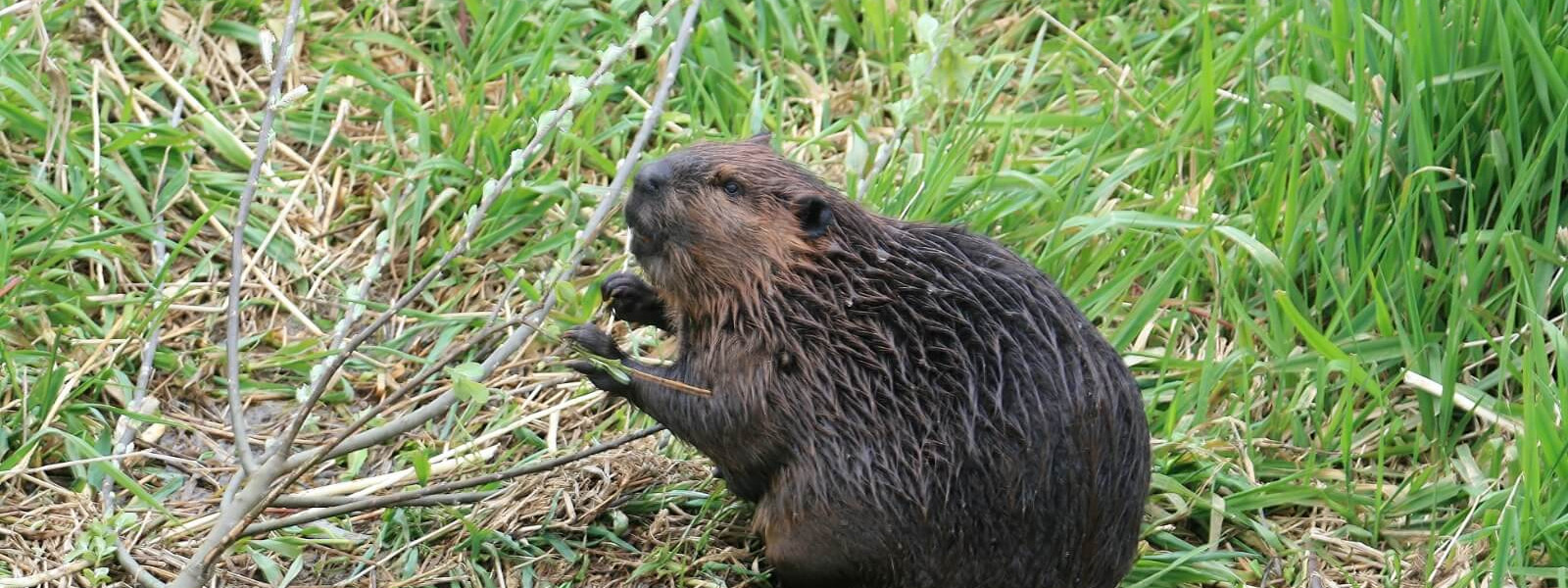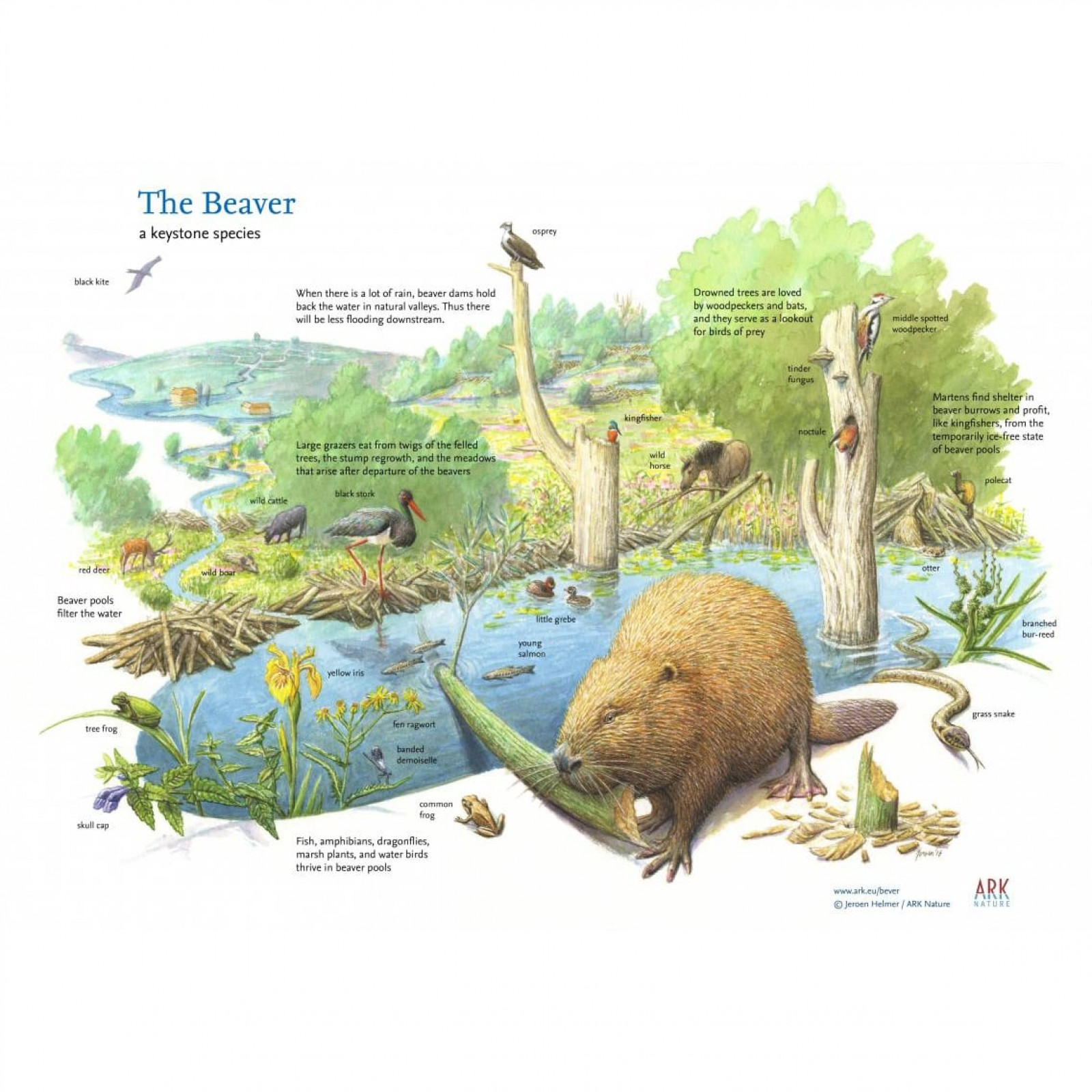
Living With Beavers
Beaver 101
Oregon's Beaver History: From Fur Trade to Human Conflicts
For millions of years, beavers have left their mark on Oregon, shaping its landscape through their industrious endeavors. In the early 1800s, the demand for beaver fur skyrocketed, fueling the establishment of the Pacific British Fur Company in 1812 in what is now Astoria. Beavers, once abundant across Oregon, became a valuable natural resource and a driving force for the region's economy.
By the late 1800s, however, the beaver population faced a significant decline, leading to a ban on trapping. The hiatus lasted until 1937, when trapping resumed. With the cessation of fur hunting, Oregon witnessed a remarkable rebound in the beaver population, but not without new challenges.
Over the past 120 years, the human population in the Tualatin River basin has surged, giving rise to an escalating number of human-beaver conflicts. Beavers, capable of causing flooding and damaging crops and trees, often found themselves in conflict with human interests. Historically, the response has been to eliminate the beavers, offering a short-term solution to immediate conflicts. However, given suitable habitats, young beavers from nearby family units tend to reoccupy these spaces shortly afterward.
If you are experiencing flooding or damage to trees or crops on your property, please use the resources found here or contact TRWC at (503) 846-4810. Let's find sustainable solutions that respect the coexistence of human and beaver communities in this shared landscape.

Why Beavers Build Dams:
Beavers are famous for building dams, which create ponds by backing up water. But why do they do this? Let's break it down:
Clumsy on Land, Awesome in Water: Beavers aren't the best walkers, making them an easy target for predators on land. Yet, they're amazing swimmers!
Safe Ponds for Families: To stay safe, beavers build dams to make ponds. In the middle of these ponds, they build homes called lodges for their families.
Underwater Hideouts: Beavers are smart—they make sure their lodges only have underwater entrances. This trick keeps predators like bobcats and coyotes away.
Water Highways: Beavers also make deep water channels in ponds, like underwater roads. These help them move around easily in their watery world.
No worries from Land Predators: Beavers create a kind of underwater city where they're safe from animals that walk on land.
Beavers aren't just builders – they're herbivores too. Their ever-growing iron-strong teeth allow them to chew through branches and tree trunks. Their diet includes leaves, fruit, grass, and tree bark, all efficiently digested in their stomachs.
In late summer and early fall, beavers focus on building up a winter food stash. This preparation ensures they have enough stored food, minimizing the need for winter foraging.
Benefits of Beavers
Beavers, recognized as Keystone Species, play a pivotal role in sustaining wildlife and maintaining the health of ecosystems. Their dam-building activities bring a myriad of benefits to humans, aquatic species, terrestrial life, and plants. Explore some of the significant advantages that beavers offer:
1. Pollution Management: Beaver dams function as natural filters by slowing down and temporarily storing water. This allows pollutants to settle before the water resumes its downstream journey, contributing to improved water quality.
2. Erosion Control: The strategic dam construction by beavers slows water flow, creating ponds that act as reservoirs during storm events. These reservoirs store substantial amounts of water, mitigating the risk of flash flooding and erosion of stream banks downstream.
3. Wildfire Protection: Beaver ponds play a crucial role in wildfire prevention. By facilitating water seepage into the ground, these ponds maintain the surrounding area's moisture. In the event of a forest fire, the moisture from beaver ponds acts as a natural barrier, halting the progress of the fire and safeguarding the riparian zone and its valuable habitat.
4. Water Storage and Release: Beaver ponds act as both above and below-ground water reservoirs. During the later months of summer, when rivers often run dry, river systems influenced by beaver activity experience sustained flow. As these ponds release stored groundwater, they become vital in maintaining consistent water levels.
5. Habitat Enrichment for Wildlife: Beaver ponds create diverse habitats for various species, including amphibians, macroinvertebrates, birds, bats, fish, and more. These ecosystems foster biodiversity, supporting the flourishing of numerous wildlife populations.